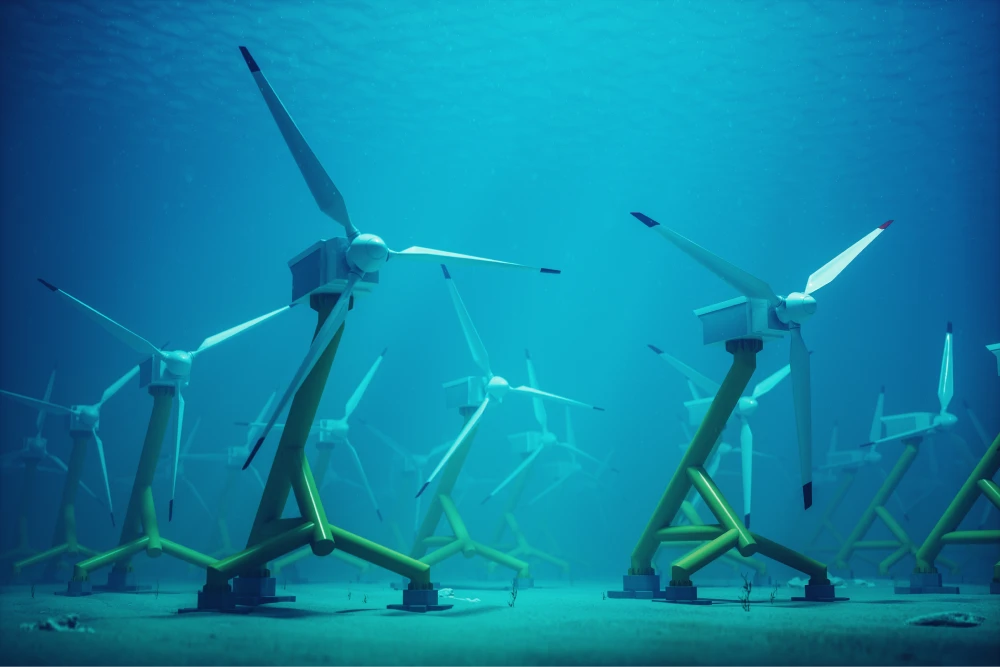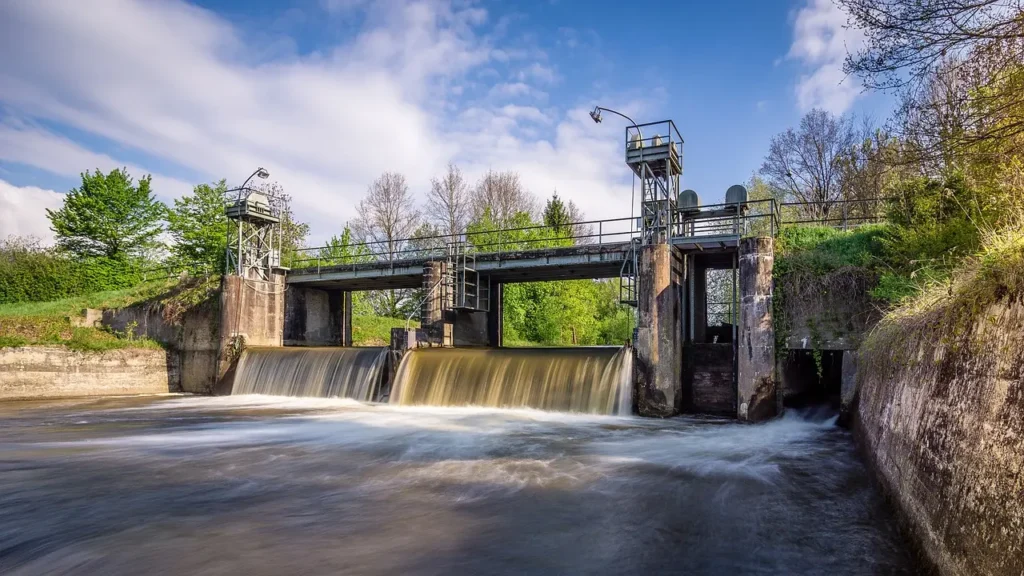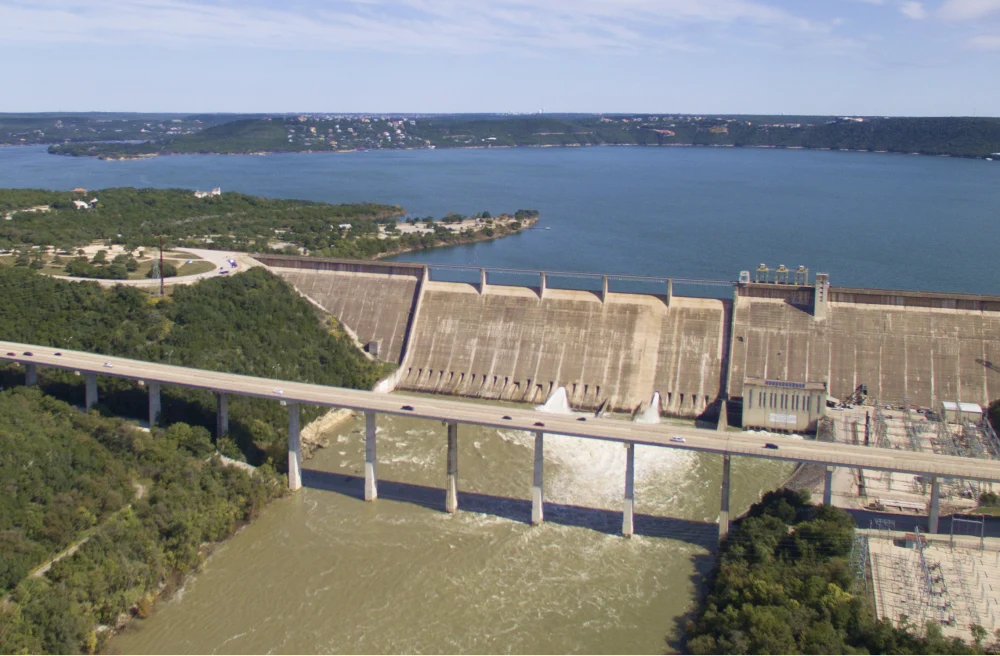Environmental Impact of Hydropower
3 minute readHydropower offers clean electricity but also alters ecosystems, water quality, and greenhouse gas levels.
Home > Learning Center > Energy Production > Pros and Cons of Tidal Energy
5 minute read • Last update July 2025

Tidal energy is an emerging form of renewable power that harnesses the kinetic and potential energy of ocean tides to generate electricity. While less common than solar or wind, tidal technologies are gaining attention due to their predictability and minimal carbon emissions. Like any energy source, tidal power comes with both advantages and trade-offs, particularly in terms of cost, scalability, and ecological impact.
Below is a quick comparison chart highlighting the major advantages and disadvantages of tidal energy systems:
| Pros | Cons |
|---|---|
| Renewable and inexhaustible | High upfront installation costs |
| Predictable and reliable generation | Potential environmental and ecological disruption |
| High energy density | Limited to coastal regions with strong tidal flows |
| Zero operational greenhouse gas emissions | Technological immaturity and limited commercial deployment |
| Low maintenance and operating costs | Complex grid integration for remote sites |
| Long asset lifespan | Challenging maintenance in harsh marine environments |
| Synergy with existing marine infrastructure | |
| Enhances grid stability |
Tidal energy, classified by the U.S. Department of Energy as a renewable marine resource, is harnessed from the natural movement of tides. Driven by consistent lunar and gravitational forces, tidal cycles provide a highly predictable and reliable energy source. With no risk of resource depletion, tidal energy serves as a valuable component in sustainable energy systems and long-term decarbonization strategies.
Unlike wind and solar, tidal movements are governed by the moon’s gravitational pull, making them highly predictable. Utilities can forecast tidal output years in advance, offering grid operators firm scheduling capacity. According to the National Renewable Energy Laboratory, “tidal energy, perhaps the most predictable renewable energy resource,” ranks predictability among its most significant advantages.
Water is roughly 800 times denser than air, allowing tidal currents to produce significantly more power per unit area than wind or solar. This density advantage means even small-scale tidal installations can deliver substantial output when placed in fast-moving waterways. Tidal energy’s exceptional energy density makes it one of the most efficient renewable resources in terms of force generation and turbine effectiveness.
Tidal energy systems produce zero emissions during operation, and their lifecycle carbon footprint—from construction and installation through decommissioning—remains substantially lower than that of fossil fuels and even some other renewables. The estimated lifecycle emissions for tidal power at approximately 15 to 23 g CO₂e per kWh, placing it on par with wind energy and making it a compelling low-carbon option.
Once installed, tidal energy devices incur relatively low maintenance costs. They require no fuel, feature fewer moving parts than combustion-based generators, and deliver decreasing operating expenditures over time. When analyzing the costs of operation and maintenance (O&M) represent just a fraction of tidal energy’s total lifecycle expenses, highlighting their economic advantage.
Barrage systems and seabed-mounted turbines are built for durability, with many designed to operate for 30 to 50 years when properly maintained. A prime example is the La Rance tidal power plant in France, which has been generating electricity continuously since 1966. La Rance has demonstrated the long-term viability of tidal infrastructure, with experts estimating that such facilities could operate for over 100 years.
Tidal energy installations can often be co-located with existing marine infrastructure, such as ports, breakwaters, and fish farms. This approach improves infrastructure utilization and lowers barriers to deployment. The U.S. Department of Energy highlights that marine energy devices can integrate into coastal structures like piers, jetties, groins, and breakwaters, providing both shoreline protection and power generation to support local microgrids and emergency systems.
Unlike intermittent sources such as wind and solar, tidal energy’s predictability enables it to function as a dependable complement to the grid, enhancing reliability and reducing the need for fossil-fuel spinning reserves. Analysis highlights tidal stream’s consistent output, linking its high predictability to a valuable capacity credit and dependable baseload performance, which can displace mid-merit or peaking plants.
The capital costs for tidal energy systems—especially barrages and lagoons—are significant due to large-scale civil engineering, complex permitting, and lengthy development timelines. These factors elevate financial risk for developers and utilities. High upfront CAPEX remains one of the main barriers to scaling tidal power.
Construction and operation of tidal facilities may impact marine ecosystems. Changes in tidal flow, sediment transport, and noise pollution can disrupt fish migration patterns, aquatic vegetation, and local biodiversity. The NOAA Office of National Marine Sanctuaries outlines some of these environmental risks.
Construction and operation of tidal facilities can impact marine ecosystems through changes in tidal flow, sediment transport, and underwater noise. These shifts may disrupt fish migration, alter aquatic vegetation, and affect local biodiversity. The NOAA Office of National Marine Sanctuaries highlights these environmental risks in its technical memorandum on tidal energy development.
While several prototypes and pilot projects are underway, tidal energy technology is still in the early stages of commercialization. The absence of standardized designs, limited manufacturing capacity, and a small vendor base continue to drive up costs and hinder large-scale investment. Most tidal technologies remain pre-commercial, with only a few advancing beyond the demonstration phase.
Remote coastal and island locations often lack existing transmission infrastructure, which means developers may need to build new grid connections. This adds cost and logistical complexity to projects that are already capital-intensive. The Electric Power Research Institute outlines these integration challenges in its evaluation of marine renewable energy deployment.
Underwater turbines and cables used in tidal energy systems are exposed to harsh conditions, including corrosion, marine growth, and high water pressure. Maintaining these components is more difficult than with land-based systems because it requires special vessels and equipment. The European Marine Energy Centre has documented real-world maintenance challenges, including heavy biofouling from barnacles and other marine organisms, in its case studies.
The future of tidal energy will largely depend on a combination of regulatory support, continued technological advancement, and market economics. Governments have started to recognize the value of marine renewables, offering tax credits, direct funding, and favorable power purchase agreements to encourage development.
Despite its higher upfront costs, tidal energy has a compelling long-term value proposition. Its levelized cost of electricity (LCOE) remains higher than wind and solar today, but the asset life of tidal infrastructure (often extending 30 to 50 years) means costs amortize favorably over time. This, combined with zero fuel input and low maintenance, could bring tidal closer to parity with other renewables, particularly in areas with favorable marine conditions.
Risk remains a key factor. Tidal systems are capital-intensive and often face construction challenges similar to hydroelectric projects. However, once operational, they offer a low-risk, stable output profile that is highly valuable in capacity markets. Unlike wind and solar, which are subject to weather variability, tidal energy can be forecasted with precision, providing firm generation to help balance the grid.
In the broader context of decarbonization, tidal power is unlikely to become a dominant energy source globally, but it plays a strategic role within a diversified renewable energy portfolio. It is especially valuable in regions with limited land availability or existing reliance on diesel generation. As innovation accelerates and modular designs gain traction, scalability may increase beyond niche applications, positioning tidal energy as a specialized but powerful tool in the clean energy transition.
Graham Lumley, Digital Marketing Manager at BKV Energy, leads digital and traditional marketing strategies, focusing on educating Texans about the state's deregulated energy market. With over 8 years of marketing experience, he creates content to help consumers understand and save on their energy bills, bringing a fresh and dynamic approach to the industry.

Hydropower offers clean electricity but also alters ecosystems, water quality, and greenhouse gas levels.

How many hydroelectric dams are there in Texas? According to the Texas Comptroller, there are currently 26 hydroelectric dams in
Get $50 off your electric bill!
Use code BKVEJOINUS50
Enter your zip code to shop BKV Energy's affordable, fixed-rate Texas electricity plans. Use the promo code for $50 off your electric bill.